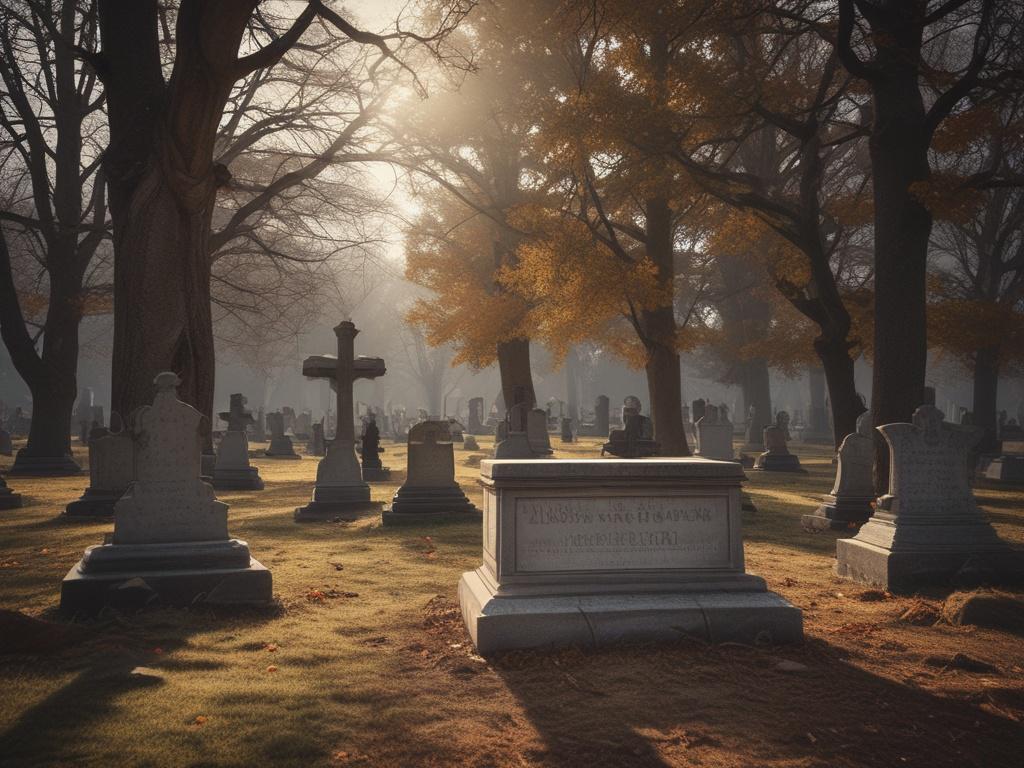
Cemeteries are often viewed as quiet resting places, but beneath their serene exteriors lies a treasure trove of history waiting to be uncovered. As we delve into the fascinating stories behind cemeteries, we embark on a journey that transcends time, revealing the lives and legacies of those who came before us. Each headstone and memorial holds a narrative, a fragment of a personal tale that sheds light on our collective human experience. From the elaborate tombs of influential figures to the simple markers of everyday lives, the stories etched in stone invite us to reflect on the past and understand the present.
In this exploration of cemeteries, we not only commemorate individual lives but also recognize the significance these sites hold in our cultural heritage. They serve as vital repositories of memory, connecting us to our ancestors and the context in which they lived. By uncovering the rich history and unique characteristics of these resting places, we illuminate the personal connections that bind us to our forebears. Join us as we unveil the narratives that breathe life into the stones, celebrating the enduring legacy of those who continue to inspire us through their stories.
Delve into the fascinating stories behind historic cemeteries: A journey through time
Cemeteries serve as silent witnesses to history, each grave telling stories of the people who once walked our streets, fought in our wars, and shaped our communities. As we delve into the fascinating stories behind historic cemeteries, we uncover a tapestry of lives that span generations. From well-known figures to ordinary citizens, every headstone represents a unique narrative waiting to be explored. Whether it's the intricately designed mausoleums of the affluent or the simple stones of everyday folks, these resting places invite us to reflect on the events that have influenced their lives and our shared past.
Taking a journey through these hallowed grounds reveals more than just dates and names; it connects us to the emotions, struggles, and triumphs of those who came before us. Each cemetery often tells the story of a specific era, showcasing artistic styles, burial customs, and even societal changes over time. Through guided tours, research, and personal exploration, we can uncover the rich history embedded in the very soil beneath our feet. As we delve deeper into these fascinating stories, we begin to understand why cemeteries are not just places of mourning; they are vital links to our collective heritage that instill a sense of place and belonging.
The lives they commemorate: Unveiling the personal tales etched in stone
Cemeteries serve as silent witnesses to the lives of individuals who have shaped our world. Every gravestone, monument, and memorial tells a unique story, inviting us to delve into the past and connect with the experiences of those who came before us. From prominent historical figures to everyday citizens, these resting places commemorate a diverse array of lives, each deserving of recognition. Exploring the lives celebrated within these grounds can reveal fascinating details about historical events, cultural shifts, and societal values. As we wander through these hallowed spaces, we engage with the rich tapestry of human experience, listening to the whispers of history that echo from the ground beneath our feet.
The inscriptions on gravestones often provide poignant insights into the personalities, passions, and legacies of the deceased. Some epitaphs are simple, while others are deeply poetic, capturing the essence of an individual’s life journey. By examining the symbols, imagery, and words chosen to honor these lives, we gain a deeper understanding of their significance and the impact they left on their communities. Furthermore, many cemeteries offer guided tours or historical narratives that connect visitors to the lives featured within. These stories allow us not only to acknowledge the departed but also to reflect on our own existence and the shared history that binds us all together. In this way, cemeteries become vital repositories of memory and insight, revealing the intricate, interconnected stories that make up the human experience.
Preserving history: The significance of cemeteries in our cultural heritage
Cemeteries serve as vital repositories of our collective memory, preserving the history of communities and the lives of individuals who have shaped them. Each gravestone tells a story, capturing the essence of the people interred within. Family names, symbols, and inscriptions reflect cultural heritage and the values of the times. By visiting these resting places, we can honor the legacies of our ancestors, gaining insights into local history and the evolution of societal norms. As we walk through the rows of headstones, we not only connect with the past but also remind ourselves of the fragility of life and the importance of remembering those who came before us.
Moreover, cemeteries play a crucial role in understanding the social and political landscapes of different eras. They often serve as historical documents, showcasing changes in art, architecture, and burial practices over time. Many cemeteries become sanctuaries of remembrance, where communities can gather for commemorative events, fostering a sense of belonging and continuity. By preserving these spaces, we maintain a tangible link to our heritage, ensuring that future generations can delve into the rich stories behind cemeteries and the remarkable lives they commemorate. In this way, cemeteries transcend their primary purpose, becoming landmarks of culture and history that invite exploration and reflection.